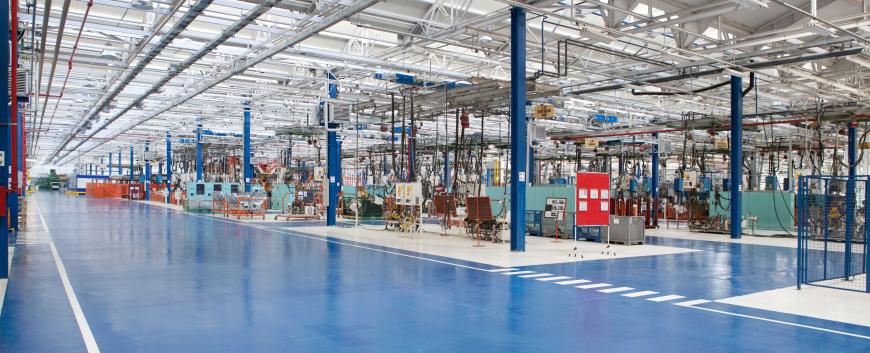Aluminum is one of the most common metals used in construction industries. It is lightweight, durable, and resistant to corrosion, making it an ideal material for different applications.
One of the processes in which aluminum is being used is extrusion. This process involves squeezing aluminum through a metal die to create specific profiles or shapes. But what makes extrusion an interesting topic? In this article, we will discuss some interesting facts about aluminum extrusion including aluminum extrusion shapes and fabrication.
What is Aluminum Extrusion and What is the Process Behind it?
Aluminum extrusion simply refers to the variety of processes involved in the manipulation of the alloy into objects with fixed cross-sectional characteristics.
Aluminum extrusion is the process of extruding or molding various shapes by forcing the aluminum alloy to billet through a die that is designed in whatever format or configuration is required for a particular building component. A lubricant is added to ensure that the alloy does not get stuck to the extrusion machine.
During the process, nitrogen will be used to avoid the formation of oxides. This in effect adds to the life of the die, because it creates an inert zone. Eventually, the part that is extruded takes the shape of the die (although they are somewhat elongated) when passed onto a run-out table.
Then it is cooled by fans. When cooling is done, the extruded part is taken for further hardening and a little straightening. Then the measurements (cutting down to the required piece size). Then the finishing touch involves a little heating to hasten the aging process.
It is beyond a doubt, a versatile building material. Particularly because of the array of design options available to choose from.
Aluminum can be extruded into a wide array of designs and shapes including the very complex, multi-hollowed and customized choices of design. Extrusions permit sophisticated design Characteristics to be easily installed as integral building components.
What shapes can be made with extrusion?
The versatility of aluminum extrusions is showcased by the wide array of shapes that can be created. Extrusions can be designed to be square, round, oval, or rectangular.
This process of aluminum extrusion fabrication can also include hollows, grooves, and other intricate shapes. Thanks to aluminum extrusion, different sizes and designs of products can be created for a variety of applications, including construction, automotive, and aerospace.
What is shape extrusion?
Shape extrusion is a type of aluminum extrusion that involves the formation of complex shapes such as tubes, channels, and angles. The aluminum is pushed through a specially designed die in a way that produces the required shape.
This process can be particularly useful for applications where the extruded components need to attach to one another. This creates a modular easy-to-assemble aluminum extrusion system that may also be disassembled.
Are aluminum extrusions straight?
Aluminum extrusions maintain close tolerances and consistent cross-sections. However, due to process variations and the nature of aluminum as a material, they may not always be perfectly straight. Aluminum extrusion material may have flaws.
However, aluminum extrusions can be machined to produce finished products that are straight and aligned. If straightness is critical to the application (such as with specific interlocking aluminum extrusions), then manufacturers can use specialized machines like an aluminum profile straightening machine to rectify any alignment issues.
What is an Aluminum Profile Straightening Machine?
Aluminum profile straightening machines are specialized machines that help straighten aluminum profiles that have bent during the extrusion process. They are specifically designed to rectify alignment issues that affect the quality of the extruded products.
These machines use a system of rollers, which exert force on the aluminum profile to straighten and realign the metal. By using an aluminum profile straightening machine, manufacturers can improve their production output and product quality.
Aluminum Extrusion Possesses Varying Options for Finishing
In the general use of the metal, there is usually no need for any type of extra protective coating. Why is this? This is simply because it is adequately protected by the thin, glassy transparent oxide which protects its surface when exposed to air. So you could say that it naturally has its protective coating.
Aluminum extrusions are especially agreeable to high-performance architectural coating. This guarantees a reduced cost of maintenance and increased service course. It accepts a large variety of decorative finishes. Finishing methods start from anodizing, painting, and powder coatings providing the desired appearance with varying applications of color.
Many manufacturers have come up with a coating by making use of pigment and binders. These are obviously on track to achieving the longest yet under varying environmental conditions.
Ease of Assembly and Fabrication
Making use of aluminum extrusion in framing means no longer worrying of the rigors concerning fabrication and assembly steps. Because of the possibility of making aluminum into any cross-sectional shape. Parts can easily be cut, machined, assembled, and fabricated.
Ease of Joining Parts
Aluminium extrusion could be joined to other aluminum products or other materials of varying properties. This could be done through the employment of a variety of methods. These methods include welding, brazing, soldering, adhesive interlocking, and slide on.
By making use of aluminum extrusion ability, we could further simplify and reduce the cost of producing complex integral profiles. These designs can achieve a great reduction in the part count (number of individual parts).

